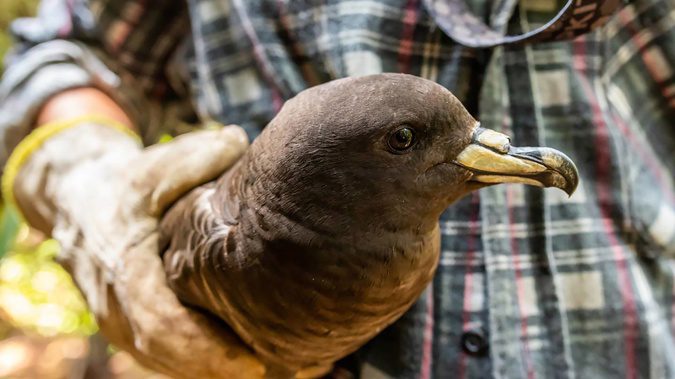TL;DR:
- Dragonfly Data Science has developed an AI tool that can identify black petrels caught in fishing lines 30 times faster than humans.
- Black petrels are at high risk of extinction and are often caught in fishing lines, resulting in drowning.
- The AI tool scans video footage and draws boxes around captured petrels, achieving results comparable to human reviewers.
- The tool functions best when used in conjunction with human reviewers but has the potential to replace them in the future.
- The New Zealand government is installing cameras on fishing vessels to monitor fishing activities and protect species like black petrels.
Main AI News:
In a groundbreaking development, Dragonfly Data Science, a leading Wellington-based data science company, has unveiled a cutting-edge tool that can detect black petrels ensnared in fishing lines a staggering 30 times faster than human observers. This remarkable technology marks the first instance of machine learning being employed to identify protected species caught in fishing nets.
Endemic to New Zealand, black petrels (known locally as tākoketai) are classified as “nationally vulnerable” due to their high risk of extinction. They face significant threats from commercial fishing activities, often becoming entangled in baited hooks as they dive into the ocean. Once ensnared, these magnificent birds are tragically pulled underwater, resulting in their untimely demise.
Graeme Taylor, the Department of Conservation’s principal science adviser, highlights the progress made in mitigating the risks posed to black petrels by New Zealand’s fishing industry over the past two decades. Implementing various measures such as bird scaring lines, night setting, and weighted lines that sink beyond the birds’ field of vision has significantly reduced the peril faced by these creatures. However, as Taylor explains, black petrels are still enticed by the bait used for various target fish species, making them susceptible to capture.
This year alone, commercial fishing operators have reported eight black petrel captures, with four birds found deceased and four successfully released unharmed, provided they had only gone for leftover bait as the line was being reeled in. To address this issue, a monitoring trial was initiated in 2015 to explore the potential of video footage in detecting deceased birds ensnared on long-line fishing hooks. Leveraging video footage from 2019 and 2020, Dragonfly Data Science devised a machine-learning algorithm capable of scanning the recordings and identifying captured black petrels.
Remarkably, this advanced tool demonstrates similar effectiveness to human reviewers, successfully identifying approximately 85 percent of seabird captures. However, its true strength lies in its unprecedented speed, capable of scanning one minute of footage every second, surpassing human capabilities by a factor of 30. By swiftly delineating a box around the detected petrels, the technology streamlines the identification process.
While the tool is still undergoing research and development, Henry Zwart, a data scientist at Dragonfly, suggests that it currently functions best in conjunction with human reviewers to optimize results. However, Zwart emphasizes the possibility of the tool replacing human reviewers entirely in the future. Given the rarity of these events and the challenging conditions in which the footage is captured—often including sunstroke, sea spray, and lens-clogging fog—the tool’s impressive performance offers great promise.
The 2017 monitoring program’s findings have significantly influenced the government’s recent efforts to document commercial fishing activities accurately. Approximately 300 vessels are being equipped with cameras to provide independent and reliable information about fishing practices. Last year, Stuff reported that three industry bodies submitted proposals to Fisheries NZ, advocating for the integration of artificial intelligence into the review process for the extensive footage to be generated. While the fishing industry largely supports the implementation of onboard cameras, concerns regarding privacy, workplace filming, and access to the footage need to be addressed.
Dr. Jeremy Helson, CEO of Seafood NZ, affirms the industry’s recognition of the valuable insights that camera footage can offer, fostering public trust in responsible fishing practices. Meanwhile, Biz Bell, the managing director of Wildlife Management International, has been overseeing black petrels on Aotea/Great Barrier Island for 28 years, working on behalf of the Department of Conservation and iwi Ngāti Rehua. Nesting in forest burrows atop Hirakimatā/Mt Hobson, these majestic seabirds, with wingspans of up to a meter and breeding weights of up to 1kg, captivate Bell and serve as a testament to the significance of understanding and safeguarding their population.
Each step forward in comprehending and protecting black petrels brings us closer to conserving and enriching their existence. The remarkable capabilities of AI technology, combined with the dedication of scientists and conservationists, offer a glimmer of hope for the future of these captivating birds.
Conclusion:
The introduction of Dragonfly Data Science’s AI tool for detecting black petrels in fishing lines represents a significant technological advancement in the conservation efforts of New Zealand’s fishing industry. By leveraging machine learning, the tool enables faster and more efficient identification of these vulnerable birds, reducing their mortality rate. The integration of AI technology in fisheries monitoring not only enhances environmental sustainability but also demonstrates the potential for AI applications in other sectors of the market, such as wildlife conservation and protection.

